Part 10: 1913-1917: The Steel Project
1913-1917: The Steel ProjectNot the Locomotion Soundtrack - Pokarekare Ana
Chrysanthenum, Easy Winners and Eugenia will have been looping in a normal game now for, ooh, 2 hours now. Sometime about now is when I dump the music by era option. Have a NZ standard that was written conteporary to this update instead.
Click here to name a vehicle!

1913: A one year break-in period is decided upon. Scrooge quietly circulates a memo among the senior managers. In it, he outlines his aims for the forseeable future. South Auckland is now McDuck country, and he wants it locked down by 1940. Any rival companies will be ousted. By 1950, he wants every industry on the map connected to transport.

The existing South Auckland steel transport scheme, will tie in nicely with these aims as it will provide a flow of steel to the Weymouth Factory. It's going to require a lot of work. The existing lines are single track and will need to be upgraded to allow trains to run on all sorts of different routes.
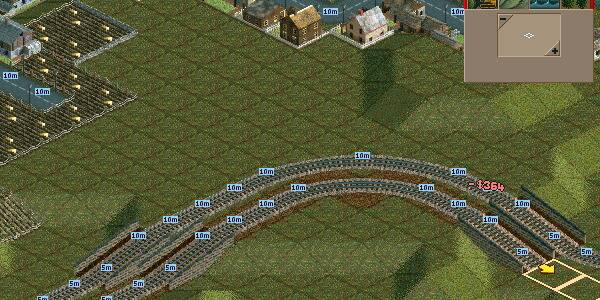
Work starts out the back of Pukekohe.
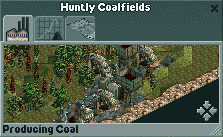
The first stage is running coal from the mines near the Waikato river to the steel mill at Glenbrook.
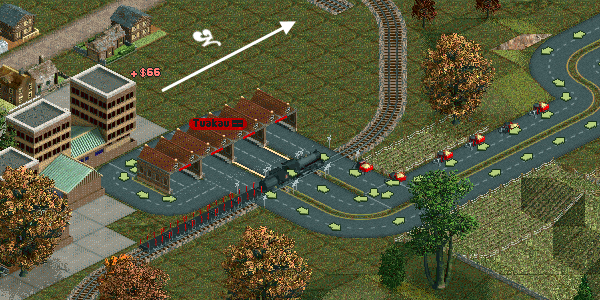
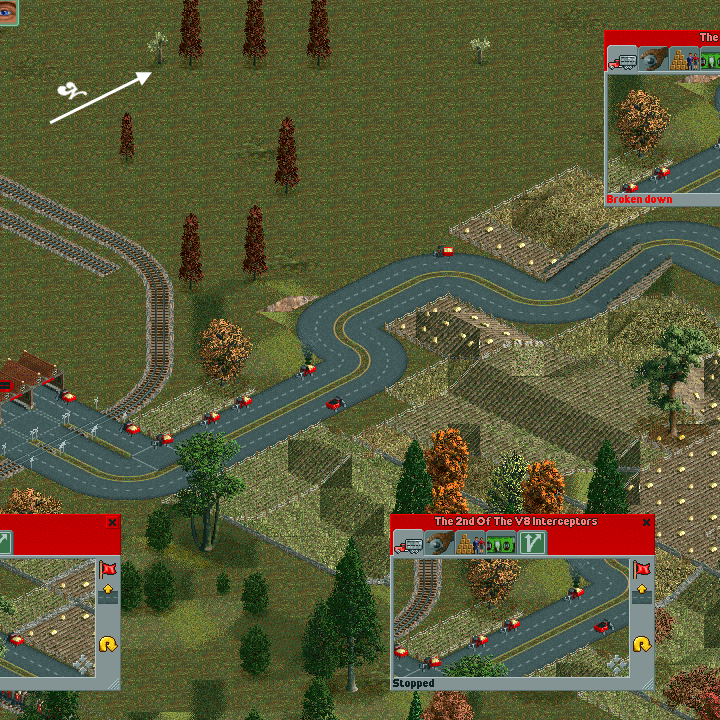
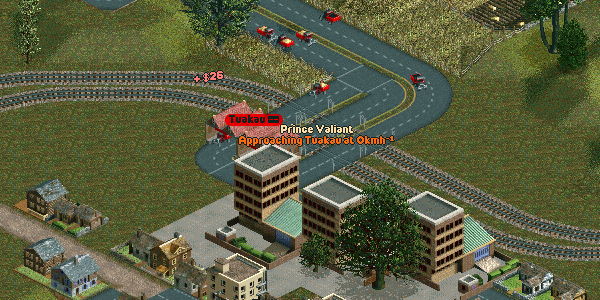
Near Tuakau, some more room is needed to for smooth running, so all 17 trucks have to be stopped to allow the cargo bay to be converted to a more efficient design.
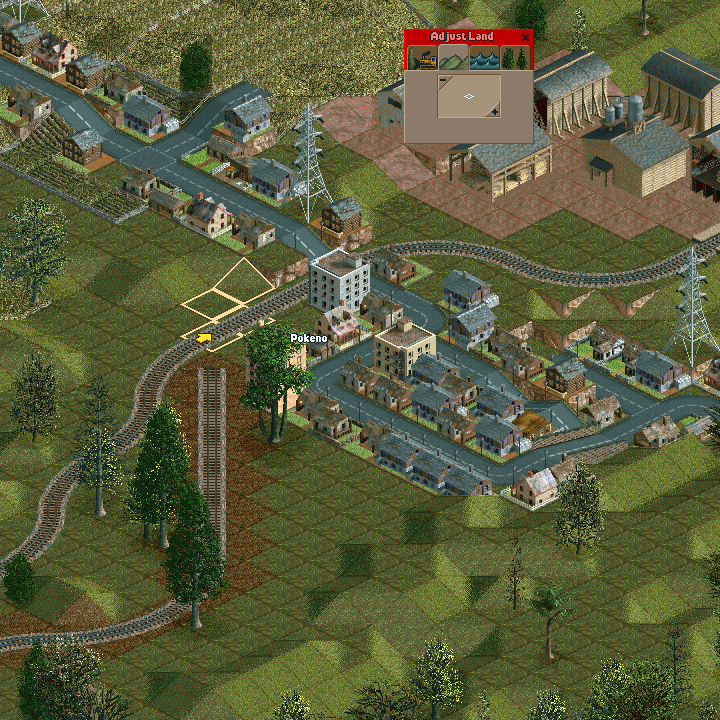
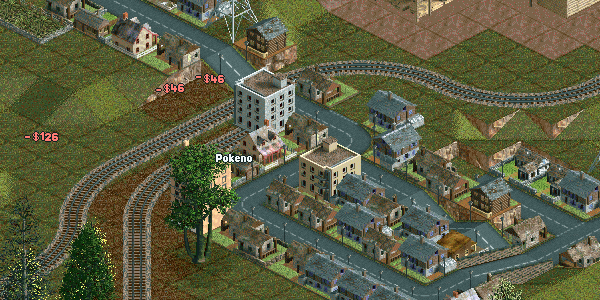
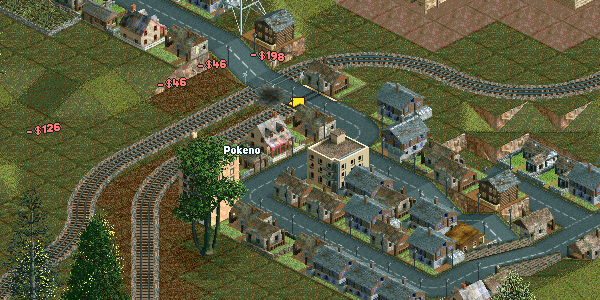
Near pokeno, we try to avoid demolishing houses, but we can't cross the inclined road. The apartment building is aquired under the Public Works Act.

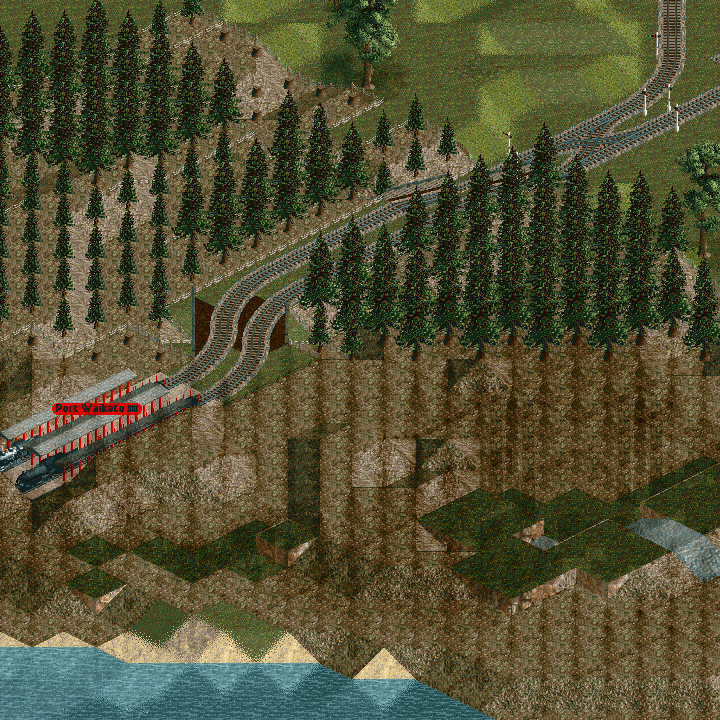
We have to figure out how to turn this terminus into a station capable of taking large amounts of trains with two cargo types as well.
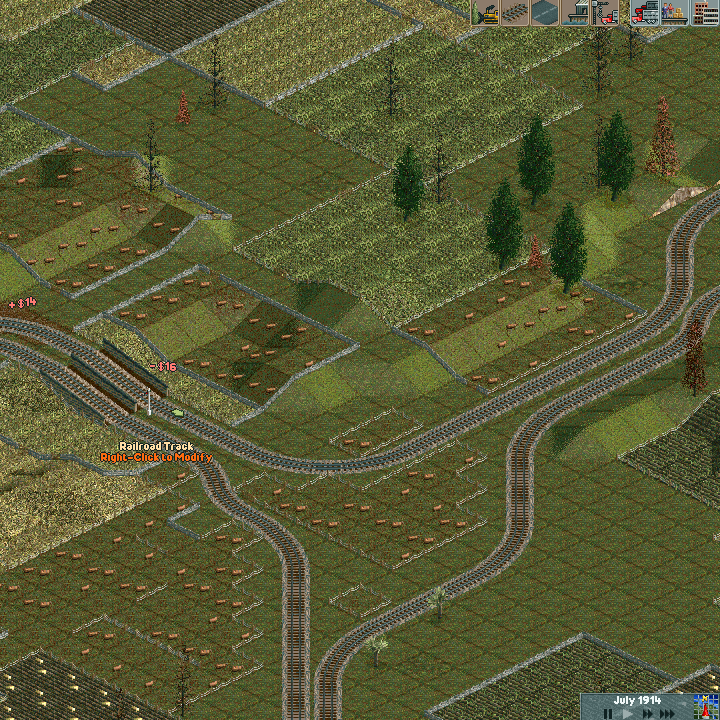
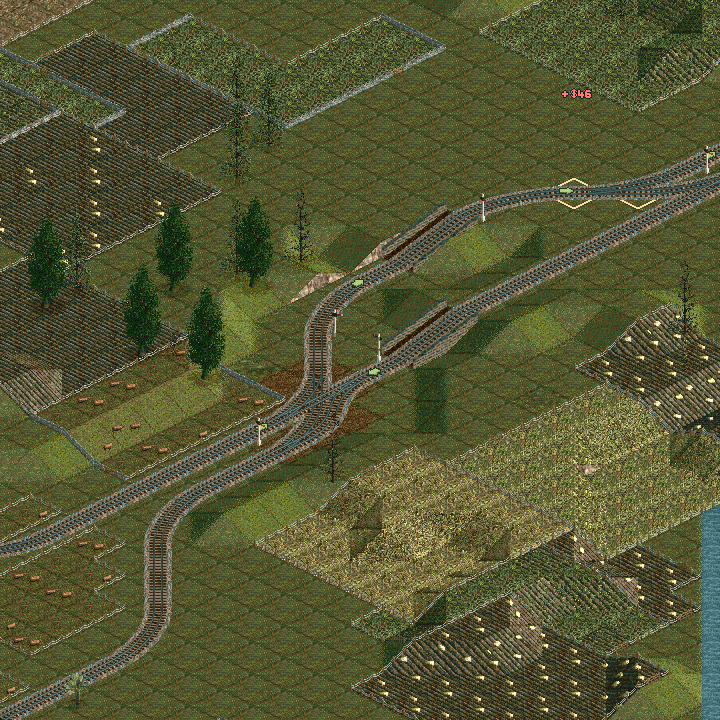
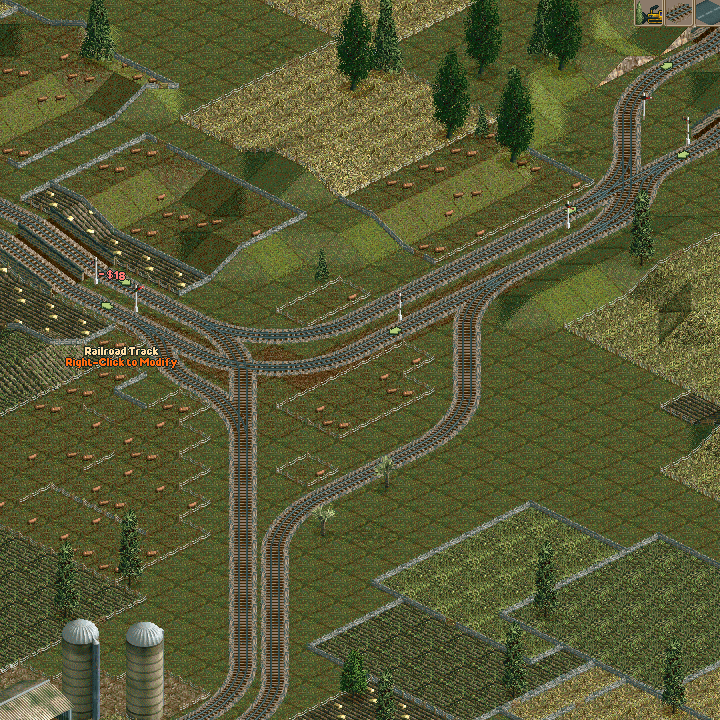
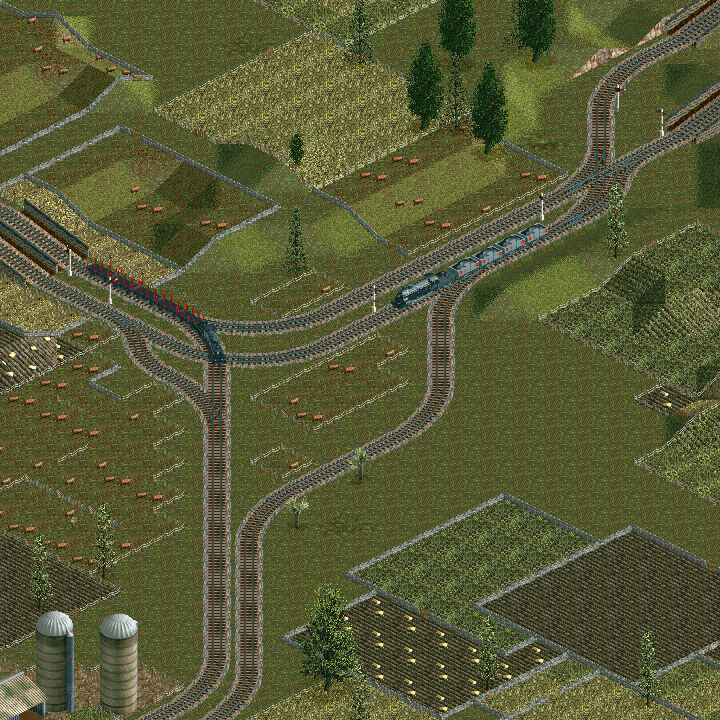
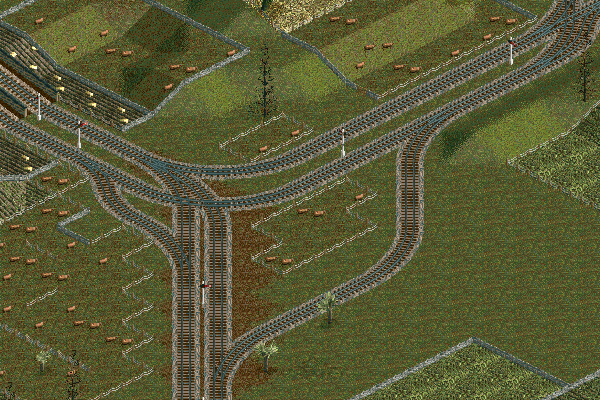
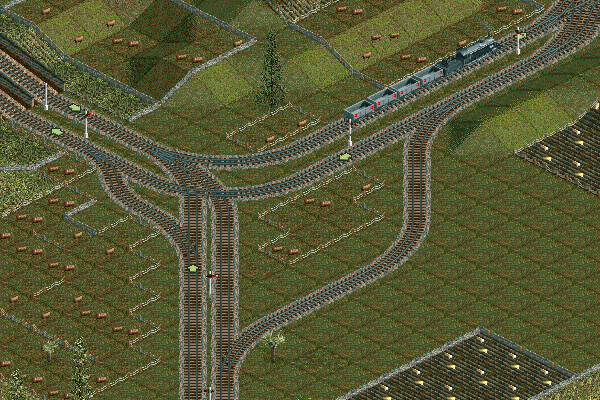
Modifying a line that already has multiple trains running on it takes a long time. Generally I build the parallel route and directionalise it while the main is still running. Then I connect the 'out' juction where the one way track leads to the station, then the 'in' track. Care must be taken if the existing line has to be relaid or signals replaced, because nearby trains may be allowed to proceed into a danger sector and crash. Once the existing trains are able to use the one-way section, I directionalise the other side. When the planned trains are running all at cross purposes like this, it takes a long time as more movements are slowly brought into operation. The advantage is that revenue is not interrupted, in this case, I only had to take control of trains three times. This is the junction where the Otaua-Pokeno line meets the line north, which will need to cope with trains coming and going to any of the other branches. It's certainly ended up characterful, although as the lines get running, it will probably be altered to a more efficient design.
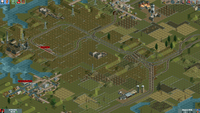
The steel mill station is laid out.
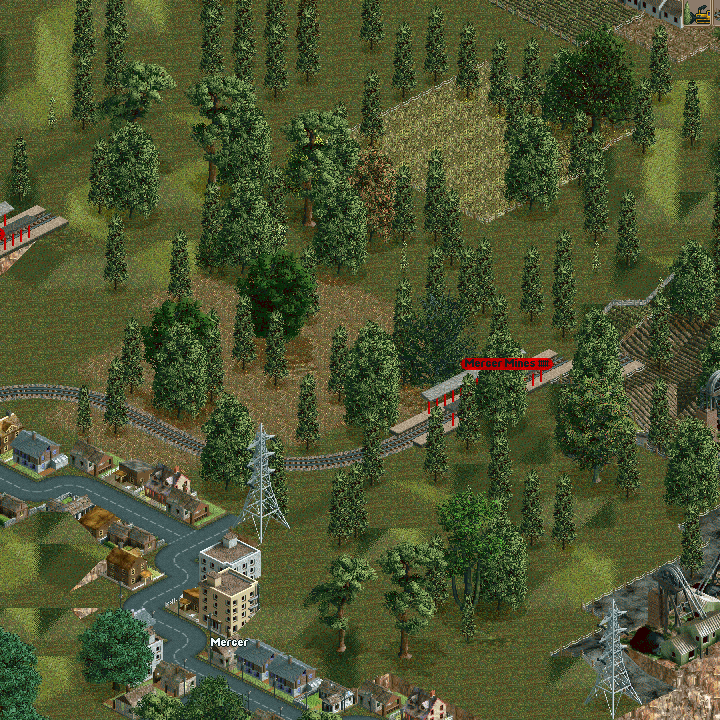

For now, a small branch from the Pokeno sawmill will get things running.
Meanwhile:
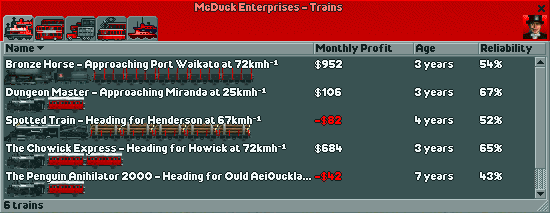
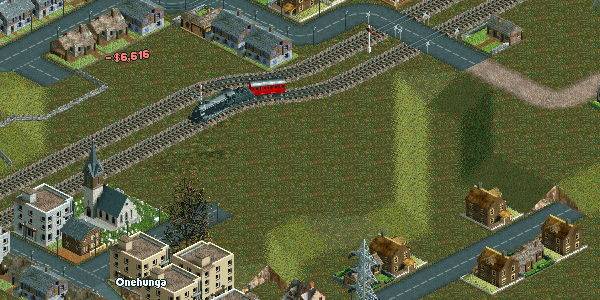
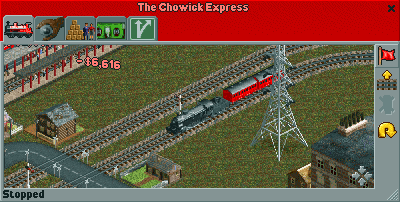
The train replacement program is delayed a bit by the line construction, but eventually goes ahead. The new locomotive proves to be more reliable than the old ones at 83%.
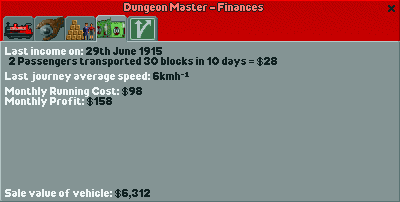
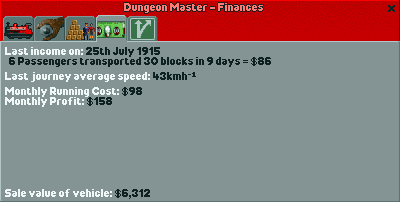
The Dungeon Master, on the isolated Kaiaua Railway provides a good test case for the new locomotive.
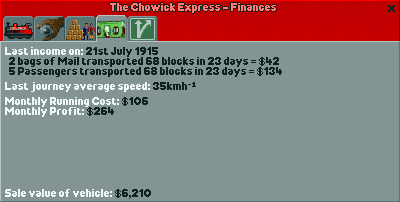
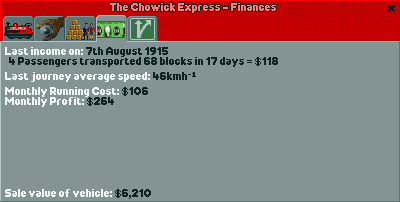
Luckily, the longer locomotives still fit into the cramped auckland station.
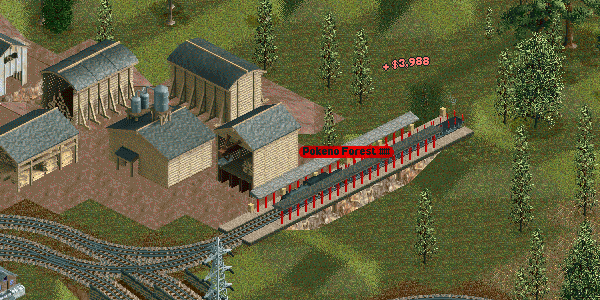
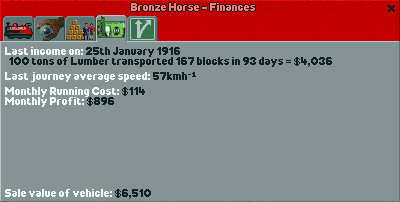
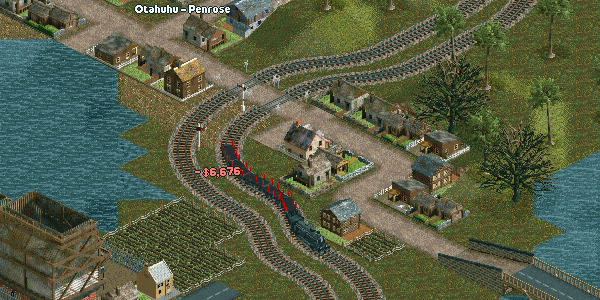
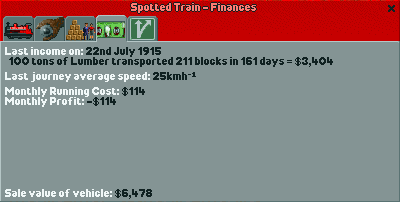
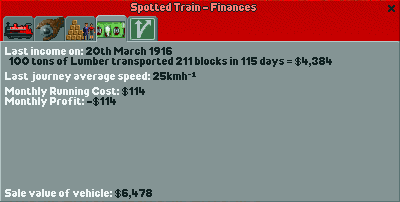
The log-haulers are less affected as they spend a long time waiting for a full load, but the long distances they travel do mean that much time is saved.
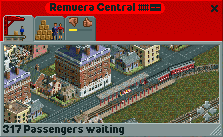
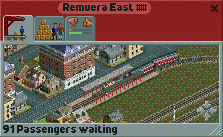
Haha! we have leached their passengers!
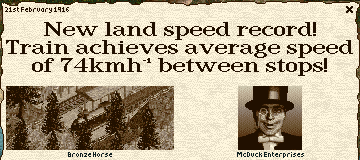
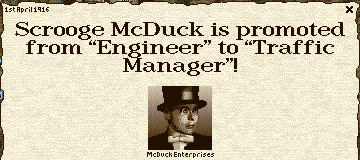
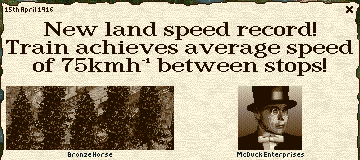
The new trains provide scrooge with an ego boost!

But what's this?
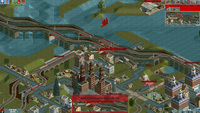


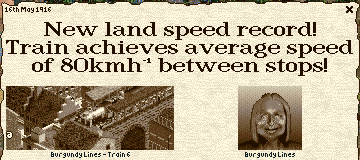
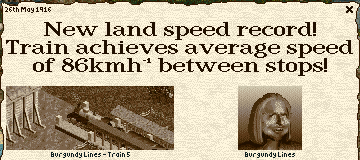
 Evelyn Eggburt has not been Idle.
Evelyn Eggburt has not been Idle.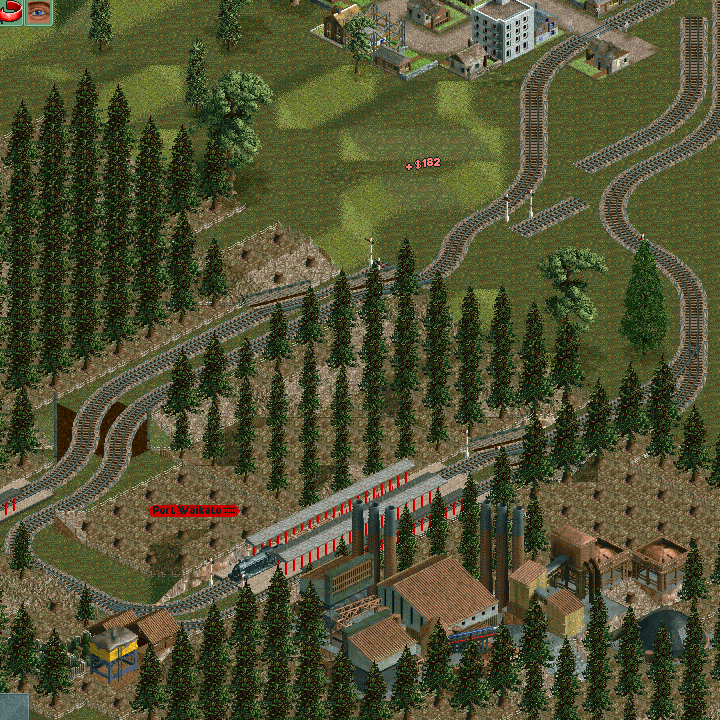
While they're making a mess of town, McDuck has to complete the conversion of Port Waikato station. By building platforms one square apart, he can migrate the station to a new position.
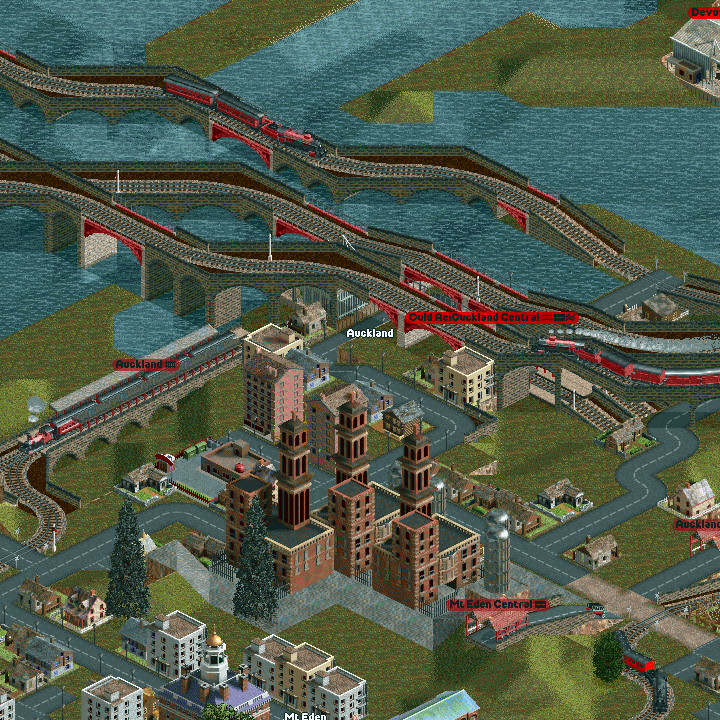
Burgundy Transport adds insult to injury.
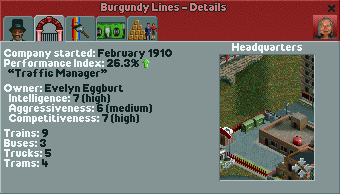
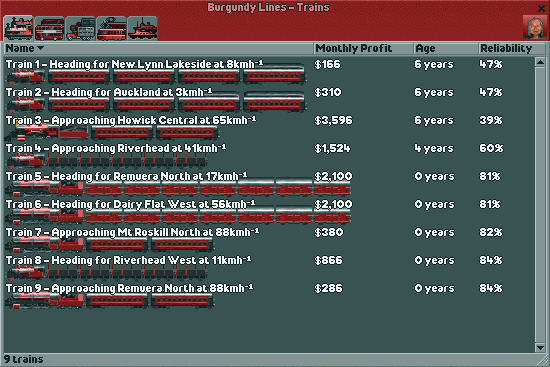
News:
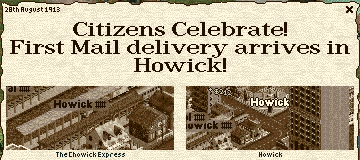

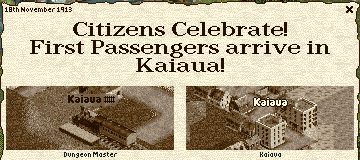
An oversight here meant that the train was only carting passengers one way.



These small announcements show what your rivals are up to.
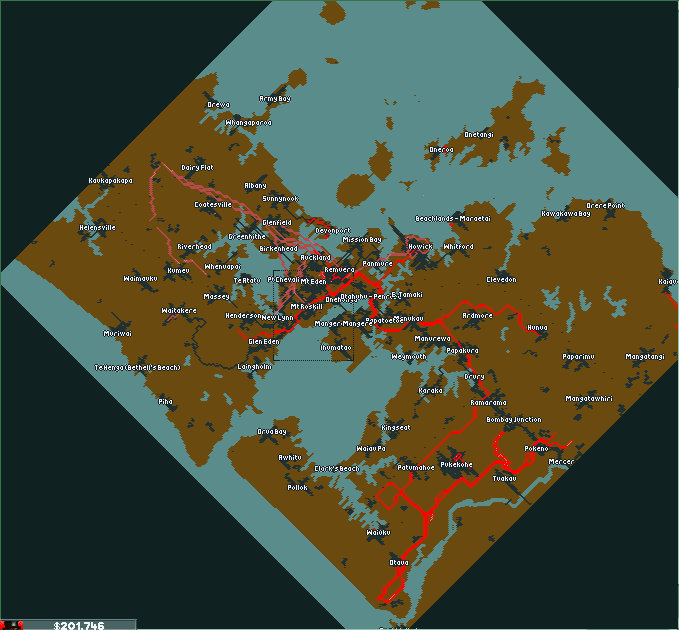
There is still some work to be done, but soon we shall see how a real railroad is run.